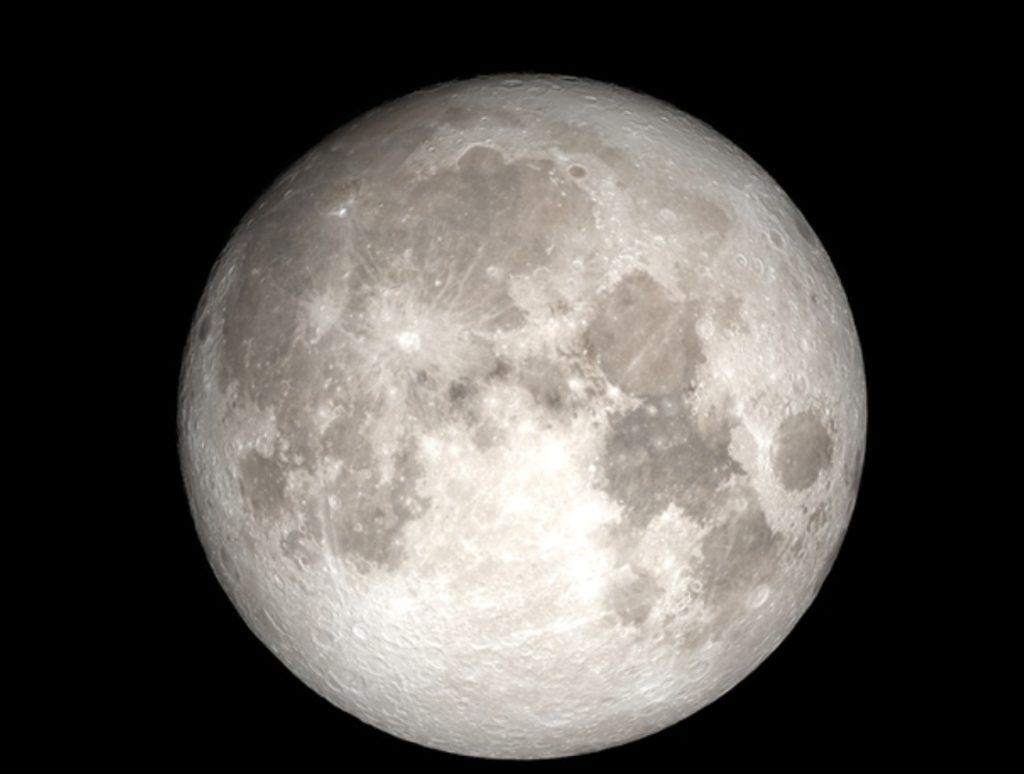1. Introduction
The Super Blue Moon is a term that combines several astronomical phenomena, drawing interest from both astronomy enthusiasts and the general public. This phenomenon results from a combination of factors, including the Moon’s cyclical changes, its relative position, and its special appearance in the sky. To fully understand the Super Blue Moon, we need to delve into it from multiple perspectives.
2. Basic Concepts
2.1 What is a Supermoon?
A Supermoon refers to a full moon that occurs when the Moon is at its closest point to Earth in its orbit, known as “perigee.” Because the Moon is closer to Earth, it appears larger and brighter than usual. In reality, the increase in brightness and size is noticeable but not as dramatic as it may seem. Typically, a Supermoon’s apparent diameter is about 7% to 14% larger than a regular full moon.
2.2 What is a Blue Moon?
A “Blue Moon” refers to the second full moon occurring within a single calendar month. Since there is usually only one full moon per month, this phenomenon is relatively rare. The term “Blue Moon” does not imply that the moon actually appears blue but is rather a term used to describe this unusual lunar cycle. A Blue Moon occurs roughly every two to three years.
2.3 Definition of Super Blue Moon
A Super Blue Moon occurs when a Blue Moon and a Supermoon overlap within the same month. This means that the second full moon of the month is both a Blue Moon and a Supermoon, making it particularly spectacular and eye-catching in the sky.
3. Scientific Principles
3.1 Moon’s Orbit
The Moon’s orbit around Earth is elliptical, so its distance from Earth varies. When the Moon is at perigee, it is closest to Earth, and at apogee, it is farthest. The Moon’s orbit period is approximately 27.3 days, but the cycle from one full moon to the next, known as the “synodic month,” is about 29.5 days. Thus, the occurrence of a Supermoon and a Blue Moon involves the alignment of these two cycles.
3.2 Parallax Effect
When the Moon is near perigee, its apparent diameter increases, making it look larger. This effect, known as the “parallax effect,” causes the Moon to appear particularly bright and grand when it is closer to Earth. The brightness of a Supermoon increases by about 30% to 50%, but these changes are not always very noticeable to the naked eye due to the subtlety of the change.
3.3 Reasons for Blue Moon
The Blue Moon occurs because of the mismatch between the lunar cycle and the calendar month. A calendar month is typically about 30 or 31 days, while a full lunar cycle is approximately 29.5 days. Due to this difference, in some years, a calendar month may experience two full moons. This rare occurrence is referred to as a “Blue Moon.”
4. Historical Background
4.1 The Moon in Ancient Cultures
The Moon has held significant symbolic meaning in many ancient cultures. In ancient Greece and Rome, the Moon was associated with goddesses such as Artemis and Diana. In Chinese culture, the Moon is an important symbol in the Mid-Autumn Festival, representing reunion and harvest. Different cultures have various interpretations and myths about the Moon, but they all emphasize its importance in both natural and societal contexts.
4.2 Development of Modern Astronomy
With the advancement of astronomical technology in the late 19th and early 20th centuries, our understanding of the Moon has deepened. The invention of the telescope allowed astronomers to observe the Moon’s surface in detail and understand its formation and evolution. The scientific explanation of Supermoons and Blue Moons is a result of modern astronomy, helping us better understand celestial movements and the Earth’s astronomical environment.

5. Observing the Super Blue Moon
5.1 How to Observe a Super Blue Moon
Observing a Super Blue Moon does not require special equipment; ordinary binoculars or even the naked eye can clearly see this phenomenon. The best viewing times are when the Moon rises and sets, as it appears most spectacular at these times. Choosing a location with an unobstructed view and minimal light pollution can enhance your observation experience.
5.2 Photography Tips
For photography enthusiasts, capturing the Super Blue Moon is an exciting challenge. Using a long-focus lens can help capture detailed images of the Moon. When photographing, use manual mode to adjust the exposure time to ensure the Moon’s details are not overexposed or blurred. Additionally, using a tripod can keep the camera steady and avoid blurring caused by hand movement.
6. Cultural Impact of the Super Blue Moon
6.1 Media and Popular Culture
The Super Blue Moon typically garners significant media coverage, not only because of its scientific significance but also due to its visual appeal to the public. Many news outlets and scientific programs provide detailed explanations of the phenomenon, along with viewing tips and photography advice. Furthermore, the Super Blue Moon often appears in literature and films, symbolizing romance or mystery.
6.2 Myths and Legends
In various cultures and traditions, the Moon is associated with different myths and legends. The Super Blue Moon, as a unique astronomical event, is often endowed with additional symbolic meanings. In Western culture, the Blue Moon is often seen as a symbol of luck, representing opportunities and change. In some traditional cultures, the Moon’s appearance is believed to be a sign from deities or ancestors.
7. Significance of the Super Blue Moon in Astronomy
7.1 Scientific Research
The Super Blue Moon provides an opportunity for astronomers to study the relative positions of the Moon and Earth. By examining this phenomenon, scientists can gain a better understanding of the Moon’s orbital changes and Earth’s gravitational influence. These studies contribute to a broader understanding of celestial motion and offer insights for future astronomical observations.
7.2 Public Education
The occurrence of a Super Blue Moon is also a significant public education opportunity. Astronomers and educators can use this event to teach the public about astronomy and inspire interest in science. Planetariums and museums often organize related observation activities and lectures, helping people to learn about and appreciate these natural phenomena.
8. Conclusion
The Super Blue Moon is a remarkable phenomenon that combines multiple astronomical events. By exploring its scientific principles, historical background, observation methods, and cultural impact in detail, we not only gain a deeper understanding of this phenomenon but also appreciate its aesthetic experience and scientific value. Whether for astronomy enthusiasts or the general public, the Super Blue Moon is a celestial event worth observing and celebrating. We look forward to future occurrences of such phenomena, which promise new discoveries and surprises.


















































Discussion about this post